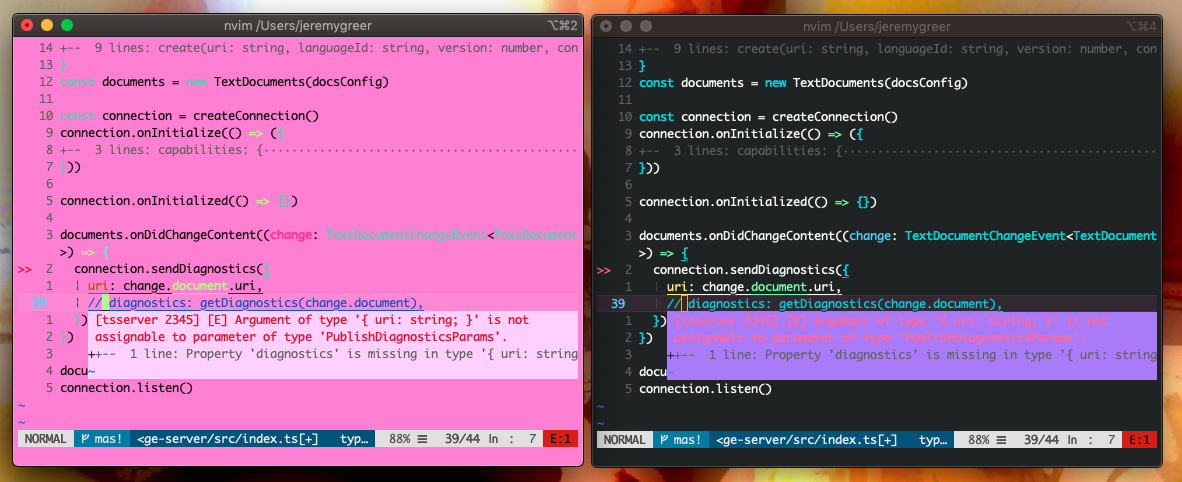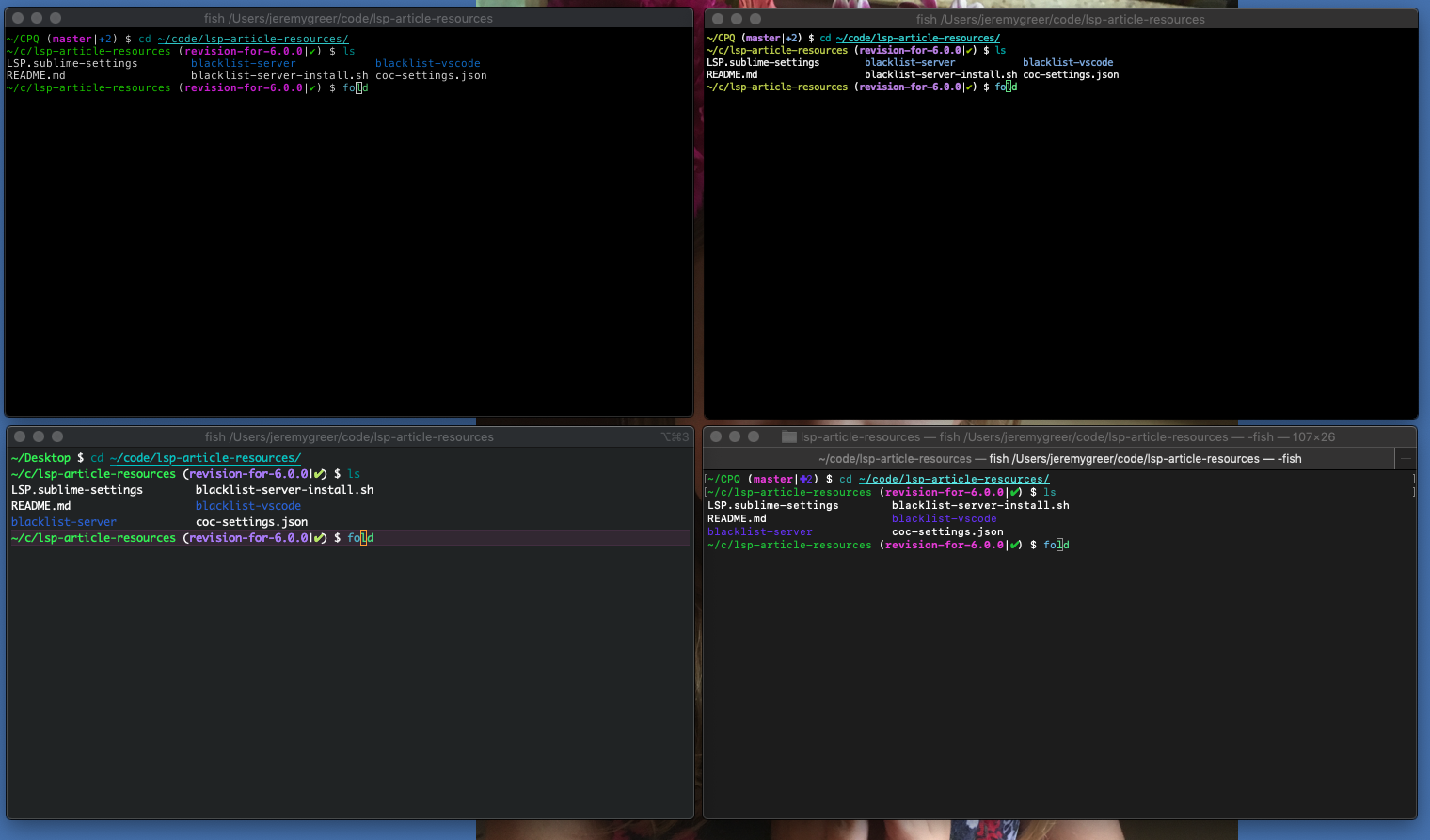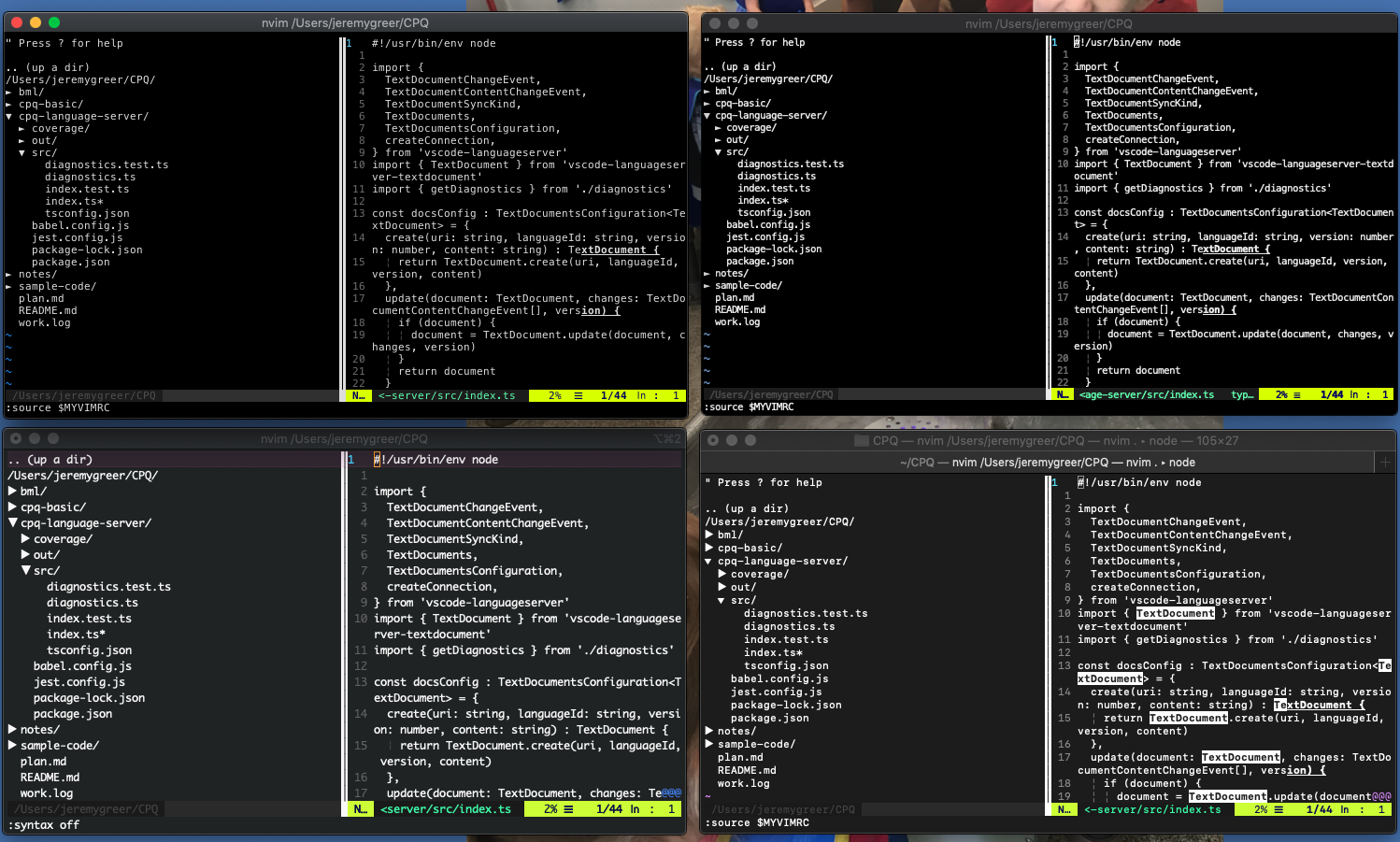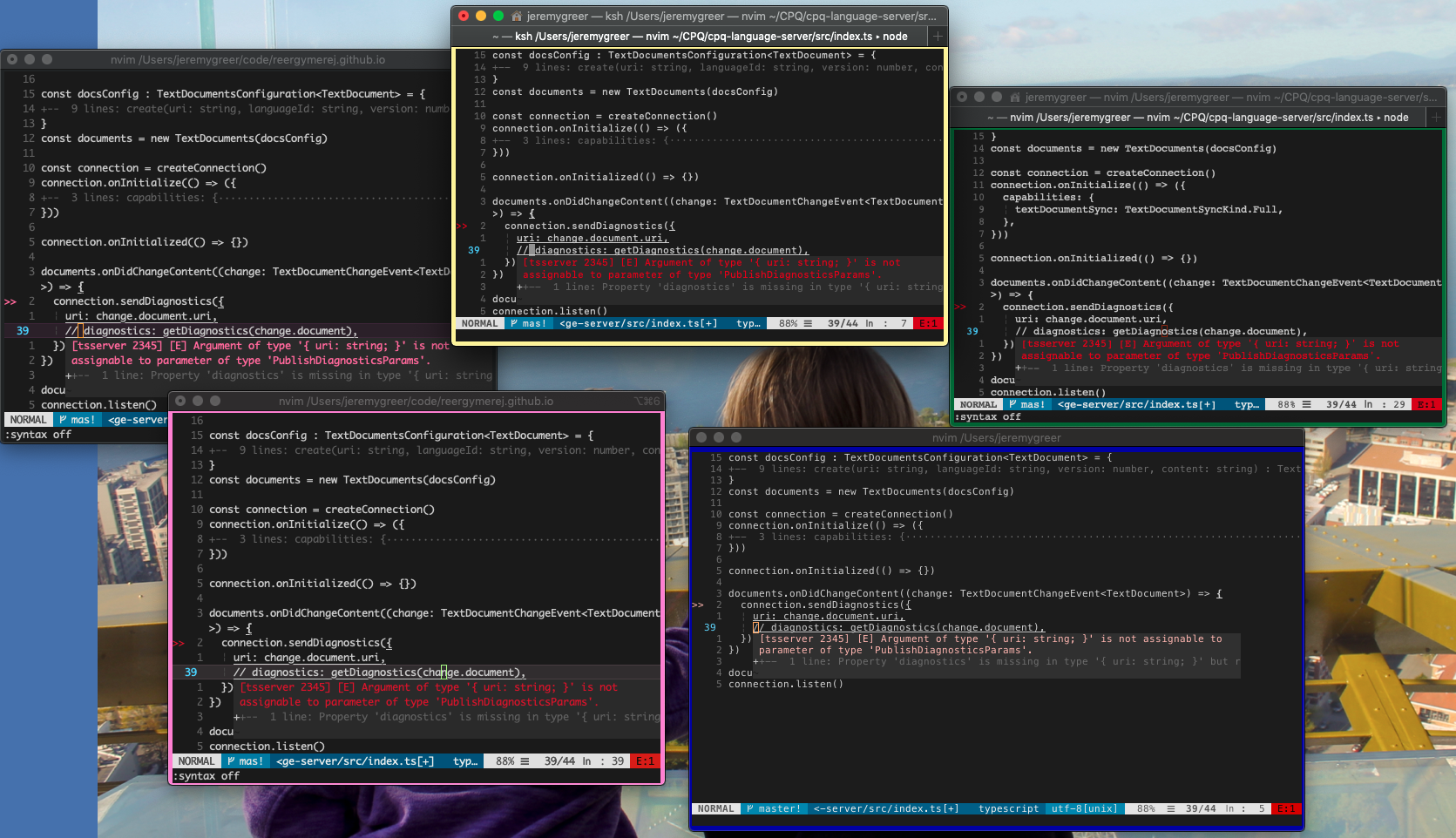Terminal Colors
Following up on a stupid question, I learned a lot about colors.
This will help you understand where all the colors you see come from.
tl;dr - They cascade like this:
- Terminal
- Shell
- Vim
- Color Schemes
- Syntax

Terminal
Some terminal emulators provide color themes. These basically just rewrite the implementation of standard ANSI colors. So instead of rendering “magenta” as a pinkish color, it may render it as green.
Two iTerm themes

Two Kitty themes


Shell
Shells provide colors for your prompt, shell scripts, and autosuggestions. These will remain consistent when using different terminals.
Fish Shell in iTerm, kitty, terminal, and alacrity

Vim
Vim doesn’t do colors by default, they are bolted in with extensions in various ways. You can see this by staring it without bells and whistles.
vim -u NONE
Like this, the terminal’s colors are what you see.

Color Schemes
Similar to terminal emulators, Vim color schemes can change the implementation for colors. There are constant names Vim uses for colors (folded_fg, color03, etc.). Schemes change the values these names evaluate to. Using color schemes, Vim will basically look the same regardless of the terminal or shell being used.
Here are various terminal emulators using profiles (see them peeking around the
edges) using various shells.

Syntax
With syntax, Vim will tell the terminal to render text with various colors. The terminal color implemenation may affect what you see.
After all day doing this, somehow I forgot to get a screen shot of this. You’re not reading this anyway, though. If you are, contact me and I’ll whip one up for you.
Random Notes
In fish, https://fishshell.com/docs/current/tutorial.html fish_prompt is used to set things up.
fish_config to change Fish colors. Prompt may take a restart of the terminal emulator. ~/.config/fish/functions/fish_prompt.fish
Start kitty with a different theme. kitty -o include=”~/.config/kitty/kitty-themes/themes/AdventureTime.conf”
See what files Vim is currently using. This will have the syntax file(s). They may overwrite each other’s values, though. :scriptnames
Learn about syntax loading :help syntax-loading
Figure out your runtime. Not the same for vim & nvim. :!echo $VIMRUNTIME /usr/local/share/vim/vim81 /usr/local/Cellar/neovim/0.4.3/share/nvim/runtime
Look for the files it may be using. find {.vim,.config/nvim} -type file -name “typescript.vim”
Naked vim vim -u NONE
get the current filetype :se ft
:syntax on :syntax off View the monster… :syntax